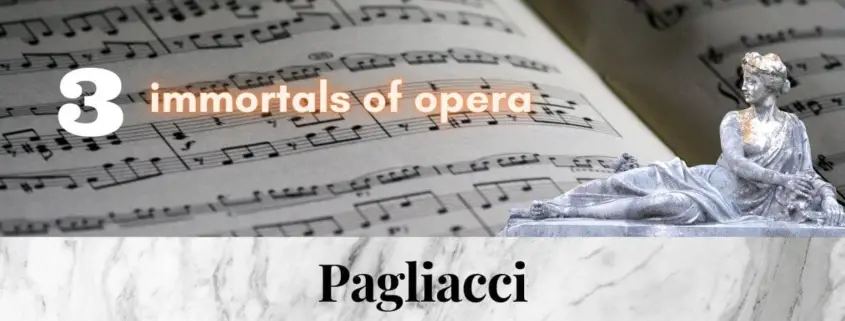3 immortal pieces from the opera PAGLIACCI by Leoncavallo – with the best interpretations from YouTube (Hits, Best of)
Pagliacci was a stroke of genius of youth. Leoncavallo was 33 years old when he composed this masterpiece. He owed his fame to a single value and all his life Leoncavallo searched for a second “Pagliacci”. He shared this fate with Pietro Mascagni, who 2 years earlier wrote the second great work of verismo “Cavalleria rusticana”.
The famous prologue
Tonio steps in front of the curtain and explains what the play is all about. Real life is shown, nothing is faked. Instead of the disguise, one should look into the soul of the actors.
This unique prologue “Si puo, Signore” introduces the opera. Instead of classical orchestral prelude, a spoken overture. A beautiful and surprising effect!
Leonard Warren was one of the great American baritones. His radiant high notes were especially remarkable. He even reached high C, which is not available every day even to many a seasoned tenor.
Si puo, Signore (Prologo) – Warren
The Conflict of Conscience of Nedda
This piece is also known as “Balatella”, “a simple song”. This, however, it is not. A glance at the text shows us that Nedda is afraid of Canio’s jealousy (brutale come egli è; brutal as he is). A flock of birds descends upon her, and her mood brightens in the following “Stridono lassu.” Flickering strings and harp music trace the wingbeats of the flock of birds. The notes are long-swinging at first, but get shorter and shorter for dramatic effect. Nedda wants to do as the birds do and escape to freedom, and the aria ends in a triumphant conclusion.
Listen to Maria Callas in a gripping recording. Her address to the bird changes from a beautiful trill to ecstasy. She has never sung Nedda on stage. Perhaps because Pagliacci is considered the tenor’s opera, where the tenor gets all the attention?
Stridono lassu – Callas
Vesti la giubba – the collapse of Pagliaccio
The final verses of these arias are impressive and have become justly famous (ridi pagliaccio):
And then laugh Pagliaccio,
at your broken love,
laugh at the suffering
that has poisoned your heart.
The tenor’s ability to express the emotions to the maximum is called for in this aria. Leoncavallo wrote at this point “with true tears”. Here the artist must reveal the soul of Canio and make his anguish seem real. Leoncavallo prepared this scene with a great crescendo, doubling the tenor’s voice with the orchestra to overwhelm the listener with the clown’s emotions.
It is not technically difficult and yet it separates the wheat from the chaff as to who has the drama of voice to touch the listener.
Let’s listen to three recordings of this aria. We start with the famous version by Caruso.
With the recording of “Vesti la giubba” Enrico Caruso made history. Let’s let Jürgen Kesting speak: “On March 17, 1907, Caruso’s most famous and momentous record was made. It is the Lamento of Canio from Pagliacci with the inimitable sob and the desperate laughter after the phrase “bah, si tu forse un uom”. The long phrase “sul tuo amore infranto”, to be unfolded with great sound, Caruso forms, audibly carried away by what he sings and suffers singing, on one breath and a tremendous, even ecstatic phonation”.
By the way, this recording of 1907 was the first record of which more than a million copies were sold!
Recitar…vesti la giubba – Caruso






Leave a Reply
Want to join the discussion?Feel free to contribute!